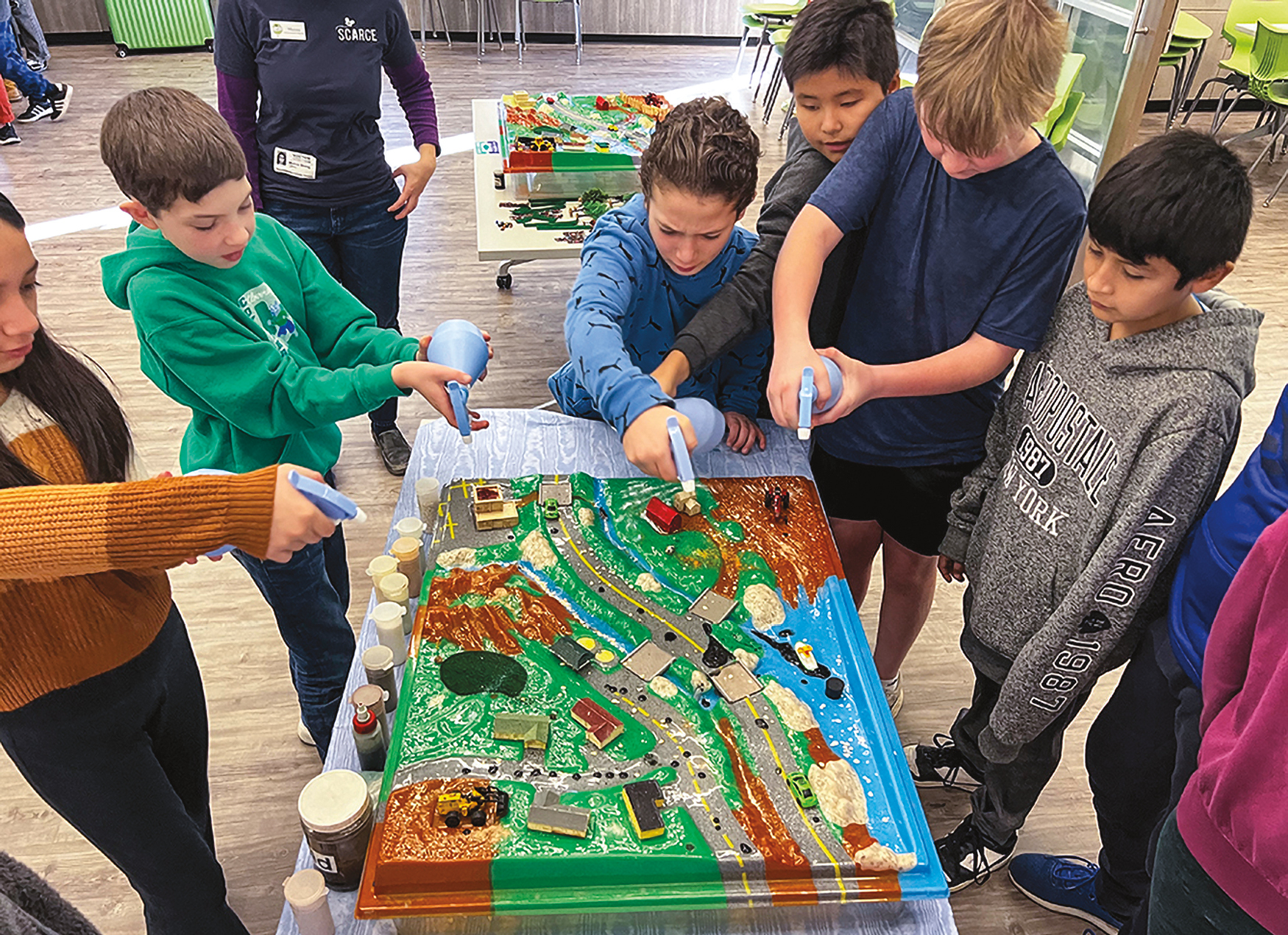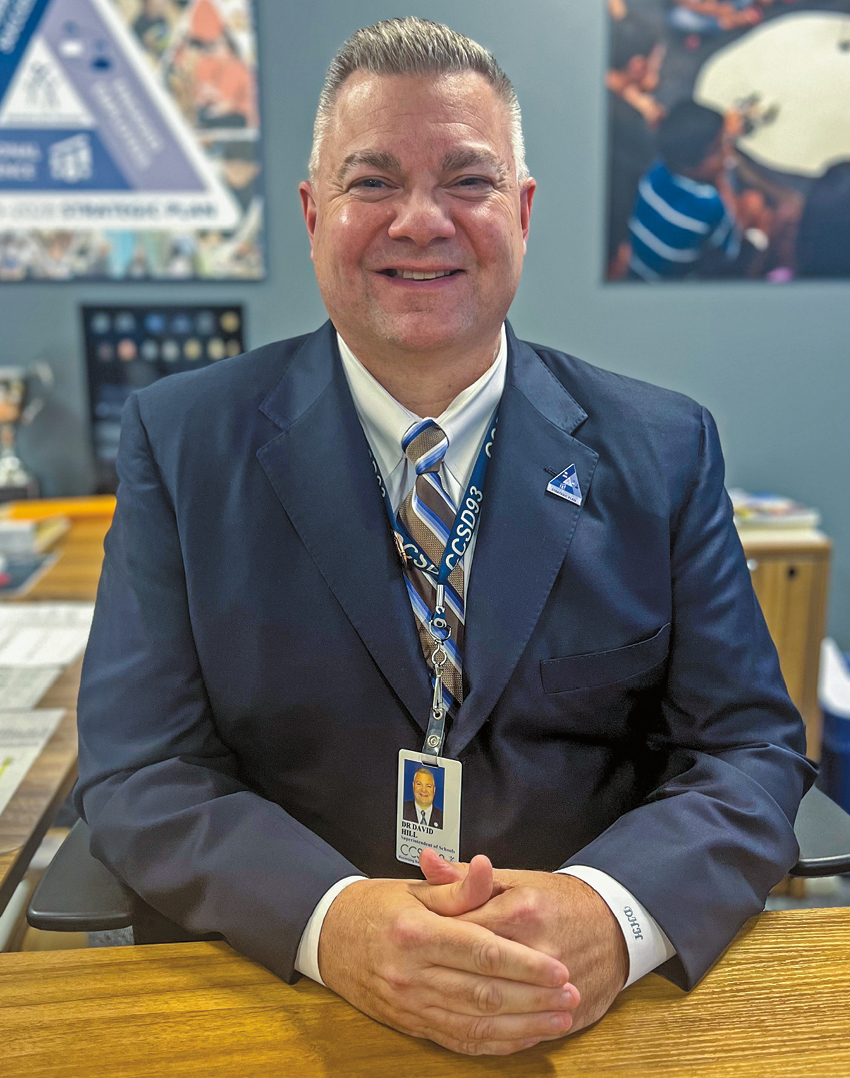Innovative Upgrades, Collective Action and Educator Empowerment
April 01, 2024
Seeking a greener future, a suburban school district addresses sustainability through professional training for its staff

Infrastructure and education. To become a better partner with our planet, our suburban Chicago school district realized we could not confine our commitment to sustainability to structural changes around the school district. Education would be the most potent tool for change, and that included educating the staff of our school district.
While numerous staff members were interested in environmental sustainability, they did not necessarily have the foundational knowledge about climate change and its impact. (An Education Week survey in 2022 indicated three quarters of teachers never received education on teaching climate change.) We undertook a mission to identify ways to empower teachers and their students on environmental stewardship.
To design and implement a professional development program that would provide our educators with the tools and experiences to increase their knowledge about climate change, we turned to a retired middle school English language arts teacher in our district. We sought to enable our teachers to incorporate the subject into appropriate lessons for our students.
Four-Part Training
Our school district’s professional development program in environmental education launched in 2019. Today, we offer district educators four nine-week courses via Zoom that are modeled after graduate school classes.
Course 1: Basics of Climate Change. The first course provides a broad overview of the fundamentals of climate change, equipping educators with the foundational knowledge they need to teach this complex subject effectively.
Course 2: Climate Fiction in Literature. The second course explores the theme of climate change in children’s and young adult literature, enabling educators to use literature as a means of engaging students in the climate change discussion.
Course 3: Place-Based Learning. The third course connects students with their local environment and the impact of climate change on surroundings. It encourages a sense of responsibility for the planet.
Course 4: Action Research. The final course focuses on educators creating lesson or unit plans that incorporate climate change or environmentalism. They put these plans into practice, making a direct impact on their students and community.
Financial Motivators
As we initiated this environmental professional development program, we encouraged participation by offering graduate hour equivalents to help teachers move horizontally on the salary schedule. This created a financial incentive to engage in what can be daunting work. It not only recognizes the dedication and effort of our educators but also fosters a sense of empowerment and motivation to continue the vital work of teaching sustainability to our students.
To date, 13 percent of our 300 teachers have completed or are currently enrolled in the program. Several staff members (only teachers are eligible) indicated the financial incentive provided some motivation to enroll but the district’s commitment to environmental sustainability was just as significant as a motivator.
We understand that sustainability is a collective effort, which is why we’ve established environmental clubs in most of our nine schools. These clubs, which are sponsored in most cases by staff members who have been part of the environmental professional development program, bring together students to work on green projects, encourage interest in the natural environment, conduct trash pick-up projects and foster future environmental leaders in our community.
Additionally, our schools partner with a local recycling organization, SCARCE, which offers three schoolwide hands-on educational programs. Participation in these programs enables a school to earn public designations reflecting their commitment to, and understanding of, environmental issues in the form of earth, ecology and water quality flags.
Infrastructure Strides
Our infrastructure improvement work began more than a decade ago as we developed a 10-year capital improvement plan. We recognized the need to systematically update and enhance our facilities to operate most efficiently and effectively overlapped with opportunities for sustainability.
Visible commitment to sustainability started with the installation of our first permeable paver parking lot in 2011. The rationale for permeable pavers was threefold:
(1) The lot never needs to be sealed. The traditional black sealant used on asphalt parking lots contains toxic compounds known as polycyclic aromatic hydrocarbons, or PAHs, which can seep in the environment and the water supply.
(2) Permeable paver parking lots last longer and need less maintenance than a traditional asphalt parking lot, which in the long run makes them more cost-effective and a more efficient use of taxpayer resources.
(3) These innovative lots allow rainwater to permeate through the surface, reducing runoff and flooding.
This environmentally friendly approach to the basic need for vehicle parking set the stage for a more sustainable and responsible district.
At the time, it was a somewhat contentious project due to the increased cost compared to traditional asphalt. The first lot was 40 percent more expensive, but that number has continued to decrease over the years.
In the bid for our most recent parking lot replacement, the cost for permeable pavers was only 12 percent higher than the cost of traditional asphalt. Our visionary board of education members supported the commitment to environmental stewardship by approving the project, understanding not only its sustainability advantages but also that the upfront cost would eventually realize long-term savings. As such, six of our nine schools now have permeable paver parking lots.
Energy Efficiencies

To seek greater efficiency, we transitioned to energy-efficient LED lighting throughout the district. This move significantly reduced energy consumption while enhancing the quality of lighting. We began installing LED lighting in the hallways at all our schools. To date, eight of our nine schools have LED lighting in their hallways and our final school is scheduled to have LED lighting installed this summer. Next, LED lighting will be coming to classrooms.
Our commitment to efficiency extended to mechanical systems. As we have replaced boilers, rooftop units, chillers, air handlers and unit ventilators, we have worked with our architects and engineers to ensure we are installing energy-efficient units to reduce consumption and operational costs. Resource management ties in with environmental responsibility.
In another strategic sustainability move, we replaced hallway flooring at several schools with a no-finish, low-maintenance product. This project improved safety and aesthetics while significantly reducing the environmental impact of chemicals typically used for floor maintenance. To date, the district has replaced hallway flooring at six of nine schools.
As with permeable paver parking lots, this project provides a visual for our community, students and staff to see firsthand our commitment to become a more sustainable and eco-friendly school environment.
Strategic Undertakings
Our sustainability initiatives are reflected in our five-year strategic plan, which includes a commitment to sustainable and responsible environmental practices. Every project and program we undertake, from innovative infrastructure changes to professional development, aligns with this commitment. This ensures we remain accountable to our vision of a greener, more sustainable future for our district, our community and our planet.
This commitment also makes it so that our school district is not afraid to fail at attempts toward environmentalism. Throughout the past decade, the district took forays into composting lunchroom waste and using more eco-friendly cleaning supplies, but both ultimately proved too costly and too burdensome on our community to continue. An advanced districtwide recycling program, unfortunately, has been waylaid due to fundamental changes in the global recycling chain.
Still, at Community Consolidated School District 93, we believe education is the key to creating a more sustainable and environmentally responsible future. Through professional development and a comprehensive range of sustainability initiatives, we are creating a district that not only reflects our values but also empowers educators to become effective climate change ambassadors in their classrooms. Our district stands as a model of how educational institutions can lead the way in building a greener, more sustainable future.
We have strived to make our commitment to sustainability a tangible reality that reflects our values. We not only are teaching students about sustainability but also demonstrating it in action, with the goal of inspiring the next generation to be conscientious stewards of the planet’s resources.
We hope to serve as an example of how educational institutions can lead the way in building a more sustainable and environmentally responsible future. n
David Hill is superintendent of Community Consolidated School District 93 in Bloomingdale, Ill.
Advertisement
Advertisement
Advertisement
Advertisement


.png?sfvrsn=3d584f2d_3)
